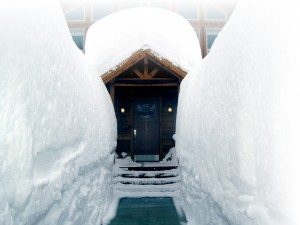By Steven Bench
For a Radiant Heating Professional there are few things more gratifying than a well designed, properly installed and correctly operating snow melting system on a cold and snowy winter day. The satisfaction of watching the snow melt as it hits the pavement of the driveway, walk-way, handicap ramp, truck ramp, and/or parking area is difficult to explain. While a correctly operating snow melting system is gratifying to those in the industry and their valued customers, one that is poorly designed, miss-installed or not operating is discouraging and damaging to our industry.
It takes both a good design and correct installation in order for a snow melting system to operate correctly. Unfortunately not all snow melting systems are designed correctly and, equally unfortunate, not all correctly designed snow melting systems are installed correctly. If one or the other is missing, no doubt, customer dissatisfaction will soon follow.
So how does one go about making certain that the snow melting systems they are contemplating for purchase is designed correctly? It is easier than you would initially think. Often times it’s as simple as asking the radiant materials supplier and/or installer a few questions.
How did you determine the amount of energy needed to melt snow for my project?
If the answer includes something along the lines of: “the watts or Btu’s needed was determined using ASHRAE snow melt standards for your projects geographic area and that the materials were selected and the design finalized based on those standards”, keep asking questions. If, on the other hand, the materials selected, energy output determined, and/or design parameters adopted were based on a particular product based on the idea that one size fits all projects then you might want to run as fast as you can from that company and find a qualified radiant supplier/designer.
How far apart have you spaced the radiant heating cables or liquid carrying tubes? If the answer is greater than 9 inches in a 4 inch or less thick sub-straight then expect to have snow accumulation (otherwise known as striping) between the radiant heating cables or liquid carrying tubes.
Does your design include jumpers through or under all joints in my concrete (crack control, expansion, and saw-cut joints)?
A yes answer is good and consistent with the National Electric Code, Canadian Electric Code and ASHRAE. A no answer is a good indication that the designer does not know what he or she is doing?
ALL JOINTS MEAN ALL JOINTS
Given the location of my project do you recommend insulation or a water barrier under the asphalt, concrete, or pavers?A blank stare or an answer without support could mean that you have the wrong designer, material supplier and/or installer.
Steven Bench is Managing Member of Heatizon Systems, a leading manufacturer of low and line voltage electric radiant heating products located in Murray, Utah.
